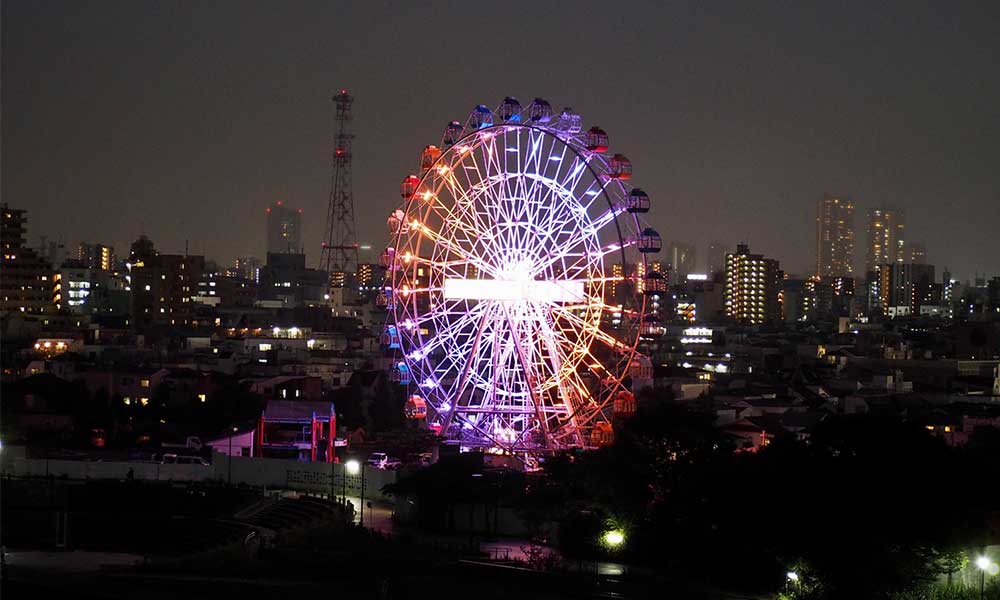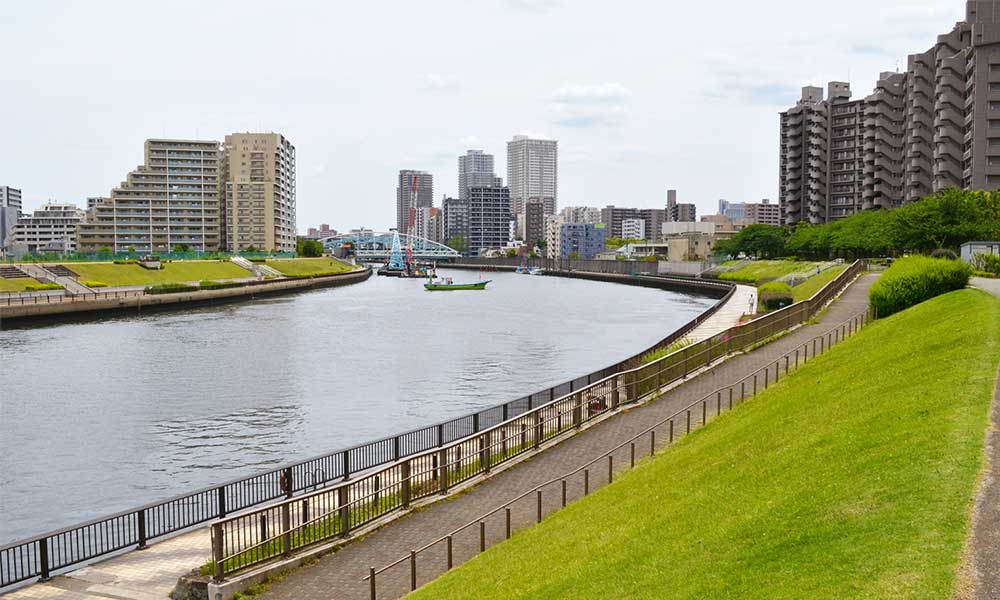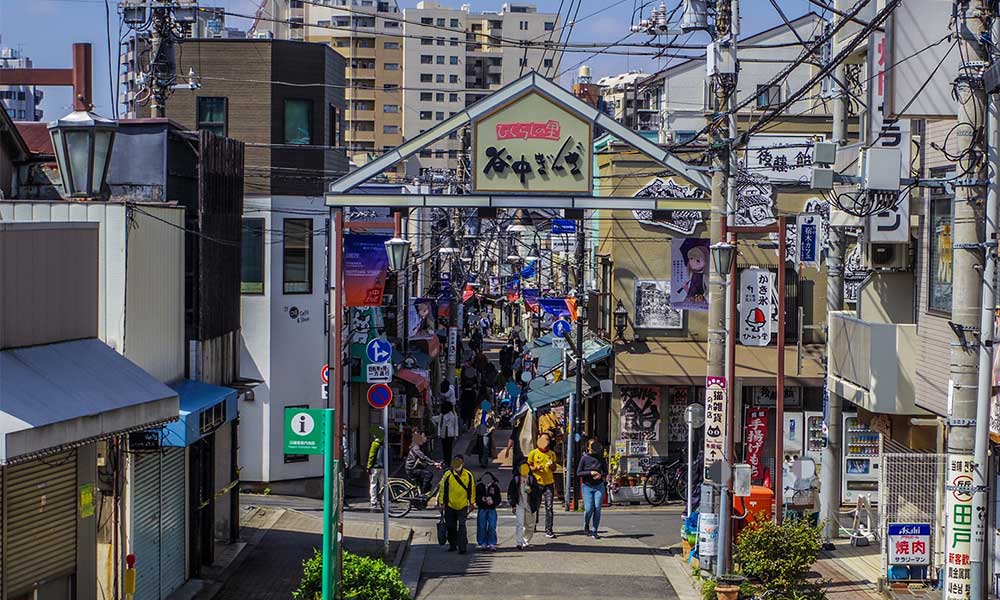Arakawa ward, Tokyo東京都荒川区
Living in Arakawa Ward, Tokyo

We have Summarized the livability of Arakawa Ward, Tokyo.
23 WARD AREA23区地域
-
- CHIYODA WARD 千代田区
-
- CHUOU WARD 中央区
-
- MINATO WARD 港区
-
- SHINJYUKU WARD 新宿区
-
- BUNKYO WARD 文京区
-
- TAITO WARD 台東区
-
- SUMIDA WARD 墨田区
-
- KOTO WARD 江東区
-
- SHINAGAWA WARD 品川区
-
- MEGURO WARD 目黒区
-
- OTA WARD 大田区
-
- SETAGAYA WARD 世田谷区
-
- SHIBUYA WARD 渋谷区
-
- NAKANO WARD 中野区
-
- SUGINAMI WARD 杉並区
-
- TOSHIMA WARD 豊島区
-
- KITA WARD 北区
-
- ARAKAWA WARD 荒川区
-
- ITABASHI WARD 板橋区
-
- NERIMA WARD 練馬区
-
- ADACHI WARD 足立区
-
- KATSUSHIKA WARD 葛飾区
-
- EDOGAWA WARD 江戸川区
CONTENTS
- What kind of place is Arakawa Ward, Tokyo?
- Arakawa WardPR video
- How is the traffic situation in Arakawa Ward?
- How are the rent and land prices in Arakawa Ward?
- How is childcare and education in Arakawa Ward?
- How about shopping in Arakawa Ward?
- How about jobs and recruitment in Arakawa Ward?
- Arakawa Ward’s unique subsidy/subsidy system
What kind of place is Arakawa Ward, Tokyo?

Arakawa Ward is a city where new apartment buildings are being built and is becoming increasingly popular among families.
Arakawa Ward is located in the northeastern part of Tokyo’s 23 wards, with an area of approximately 10.16 square kilometers.
It borders Adachi Ward to the north, Sumida Ward to the east, Taito Ward to the south, and Bunkyo Ward and Kita Ward to the west.
It has a population of approximately 216,000 and approximately 119,000 households. (As of March 2023)
The terrain is elongated from east to west, with mostly low-lying, flat areas.
During the Edo period, it was a peaceful area with rural areas. In the Meiji period, many factories began to be built along the Arakawa River, and industrialization progressed.
In 1932, the towns of Minamisenju, Mikawashima, Oku, and Nippori in Kitatoshima County merged to form Arakawa Ward. The Sumida River that runs through the ward was called the Arakawa River at the time, and is the origin of the ward’s name.
Today, Arakawa Ward has become a popular destination for families, with former factory sites being developed into large apartment complexes and parks, mainly in Kitasenju and Minamisenju, and it has become an attractive town where new and old cultures are mixed while retaining the scenery full of downtown atmosphere.
There are also many tourist attractions.
Arakawa Amusement Park, which opened in 1922, is the only public amusement park in Tokyo’s 23 wards. It is famous as a popular amusement park for families, with attractions, play equipment, and pools for small children, and admission fees are set relatively low.
Nippori Textile Town is a textile town with a row of fabric and textile stores stretching for 1km, a 3-minute walk from JR Nippori Station. It is a spot that attracts many visitors from outside the ward, as it has everything you need for handicrafts, including textile-related fabrics and accessories.
The ward is also famous for having many historic temples and shrines, such as Entsu-ji Temple and Joko-ji Temple.
PR video of Arakawa Ward, Tokyo
Arakawa Promotion for 2022
Arakawa-ku Minamisenju Walking Map: History and Culture Course Part 1
Arakawa-ku Minamisenju Walking Map: History and Culture Course Part 2
How is the traffic situation in Arakawa Ward?

Arakawa Ward is a city with easy access to anywhere in the city center via the Yamanote Line.
There are 9 train lines and 24 stations that pass through Arakawa Ward.
| Nippori Station | JR Yamanote Line・JR Keihin Tohoku Line・JR Joban Line (Ueno – Sendai)・Keisei Main Line |
| Nishi-Nippori Station | JR Yamanote Line・JR Keihin Tohoku Line・Tokyo Metro Chiyoda Line |
| Minamisenju Station | JR Joban Line (Ueno – Sendai)・Tokyo Metro Hibiya Line・Tsukuba Express |
| Nippori Station | Toei Nippori・Toneri Liner |
| Machiya Station | Tokyo Metro Chiyoda Line |
| Nishi-Nippori Station | Toei Nippori・Toneri Liner |
| Machiya Station | Keisei Main Line |
| Mikawashima Station | JR Joban Line (Ueno – Sendai) |
| Machiya Station | Toden Arakawa Line |
| Minowabashi Station | Toden Arakawa Line |
| Kumanomae Station | Toei Nippori・Toneri Liner |
| Arakawa-shako-mae Station | Toden Arakawa Line |
| Akado Elementary School Station | Toei Nippori・Toneri Liner |
| Kumanomae Station | Toden Arakawa Line |
| Arakawa Ward Office Station | Toden Arakawa Line |
| Arakawaichichuumae Station | Toden Arakawa Line |
| Shin-Mikawashima Station | Keisei Main Line |
| Arakawa Amusement Park Station | Toden Arakawa Line |
| Miyanomae Station | Toden Arakawa Line |
| Odai Station | Toden Arakawa Line |
| Machiya 2-chome Station | Toden Arakawa Line |
| Higashi-Oku 3-chome Station | Toden Arakawa Line |
| Arakawa 2-chome Station | Toden Arakawa Line |
| Arakawa 7-chome Station | Toden Arakawa Line |
Local buses are operated by Toei Bus and Keisei Bus.
You can also use the “Arakawa Community Bus” which provides low-cost access to major facilities.
There are no expressway entrances or exits within the ward.
National Route 4 runs through the ward, passing from Chuo Ward in Tokyo through Utsunomiya City, Tochigi Prefecture, Fukushima City, Fukushima Prefecture, Sendai City, Miyagi Prefecture, and Morioka City, Iwate Prefecture, before ending in Aomori City, Aomori Prefecture.
There are several routes running through the area, making it easy to get to the city center.
Some areas have heavy traffic and narrow roads, which can be inconvenient for cyclists and pedestrians.
How are the rent and land prices in Arakawa Ward?

Arakawa Ward: Relatively low prices within the 23 wards, and a newly built detached house is no longer a dream
According to information from a real estate information website, the average rent in the ward for a newly built apartment within a 10-minute walk from the station is about 84,000 yen for a 1K and 145,000 yen for a 2DK.
The average land price is about 2.36 million yen per tsubo.
The average price of a newly built apartment is 53.24 million yen, the average area is 55.73 m2, and the average price per tsubo is 3.159 million yen per tsubo. (As of 2018-2022)
In recent years, Arakawa Ward has seen an increase in high-rise apartments and newly built detached houses, so you can choose from a variety of housing options.
Land prices in the ward are relatively stable and slightly lower than in the city center. However, the price range along the train line can be high, so some properties can be expensive depending on the location.
The security situation is relatively good and you can live there safely.
Some locations have high property prices, so you need to be careful about costs when searching for a home.
How is childcare and education in Arakawa Ward?

Arakawa Ward: A city with generous childcare support and attracting families
Arakawa ward has 31 nursery schools, 13 kindergartens, 24 elementary schools, 12 junior high schools, 5 high schools, 1 university, and 8 vocational schools.
Child medical expenses subsidies are available for both outpatient and inpatient care for children up to 18 years old (as of March 31st after they reach 18 years old), and cover the full cost of care.
Child allowances are provided: 15,000 yen for children under 3 years old, 10,000 yen for the first and second child aged 3 or older and not yet entering elementary school, 15,000 yen for the third child and onwards, and 10,000 yen for junior high school students.
Arakawa Ward also offers a wide range of support services unique to the ward.
For families who are becoming parents for the first time, “Hello Baby Classes” and “New Dad Classes” provide lectures on childcare methods for welcoming a new baby.
In addition, “Arakawa Kids Mothers Call 24” is a service where you can talk to dedicated staff about any worries or concerns you may have during pregnancy or childcare, 24 hours a day, 365 days a year.
Arakawa ward has many parks and libraries, and various facilities to support child-rearing.
In addition, there are many nurseries and kindergartens, and the necessary facilities for child-rearing are in place, making it an area with a good environment for raising children.
Each school in Arakawa ward has its own unique characteristics.
For example, there are elementary schools that focus on music and art, and schools that focus on sports. There are junior high schools that focus on English education, and schools that focus on science and mathematics education.
In addition, all high schools are characterized by a high rate of students going on to higher education. Many students go on to university or vocational school, making it an area with a favorable educational environment.
Although it is relatively close to the city center, there is plenty of nature and parks where you can raise your children freely.
Arakawa Ward has a large number of nursery schools and kindergartens, but it is difficult to get into them, and some parents are troubled by the problem of children on waiting lists to get into nursery schools.
How about shopping in Arakawa Ward?

Arakawa Ward is a city with many supermarkets and other shops that are essential to daily life.
Arakawa ward has many stores where you can easily purchase daily necessities and fresh foods, such as supermarkets and convenience stores. There are about 38 supermarkets, mainly My Basket and Maruetsu.
The area around Minamisenju Station has been undergoing large-scale redevelopment since the 1980s, and many residential areas and large apartment buildings have been built, while shopping facilities have also been opening one after another. Representative facilities include Bivi Minamisenju and LaLa Terrace Minamisenju, which are home to large supermarkets, specialty stores, restaurants, and more, making it a convenient area for daily shopping.
In addition, Ecute Nippori, a shopping facility inside Nippori Station, is popular as a shopping facility that can be enjoyed without leaving the ticket gates, with many stores mainly selling sweets and prepared foods.
There are plenty of local shops and supermarkets, making fresh food and everyday items easily available.
There are few luxury brand stores in the ward, so you have to go to the city center to buy luxury goods.There are also few fashion specialty stores, which can be inconvenient.
How about jobs and recruitment in Arakawa Ward?
Arakawa Ward: A city with a wide range of businesses
The average annual salary in Arakawa Ward is 3.87 million yen.
Arakawa Ward has been an industrialized area since the Meiji and Taisho eras, with printing, metal processing, leather, and clothing being the main industries, so you can expect to find jobs.
Other industries in the area include healthcare and welfare, education, manufacturing, services, retail, and construction, and there is a stable number of job openings.
In addition, there are many healthcare and welfare facilities, and there tends to be a lot of job openings for nurses, caregivers, medical office staff, etc.
There are job openings in a wide variety of industries, so it’s easy to find a job that suits you. In addition, there are multiple train lines, so transportation access is good and it’s convenient for commuting.
While there are many job openings in Tokyo, the competition is also fierce, and when applying for a job, the selection process can be strict because there are often a large number of applicants.
Arakawa Ward, Tokyo’s unique subsidy/subsidy system
Arakawa Ward, Tokyo’s unique housing assistance and subsidy system
Arakawa Ward, Tokyo’s unique childcare support system
Arakawa Ward, Tokyo’s unique system for further education and tuition assistance/subsidies
| School support Scholarship Fund Arakawa Ward Childcare Worker Support Scholarship Program Subsidy Loan Program to Support Exam Takers |
























